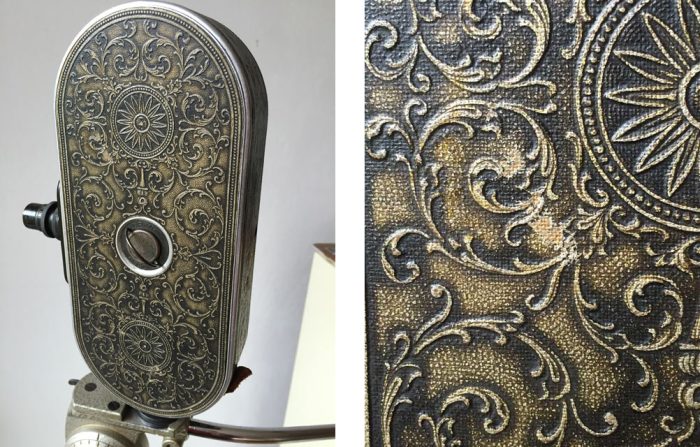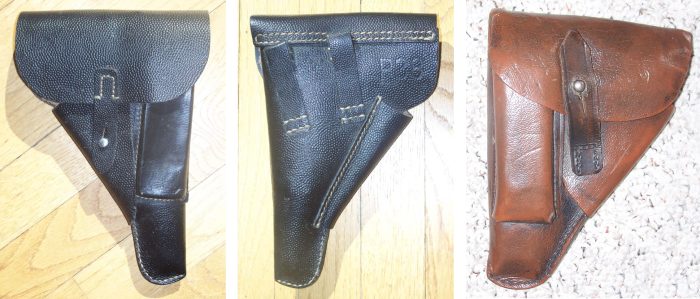05 Sep Microfiber leather – third generation synthetic leather
Synthetic leather is not just a cheaper option to real leather, is already looks back on an amazingly long successful history and development. It is used everywhere where the stress is very high. With the third generation of artificial leather, the microfiber leather has now definitely taken at least an equal position at the side of the real leather (see also the article Genuine leather or synthetic leather?).
What is microfiber leather?
Nowadays, it is hardly possible for non-experts to distinguish genuine leather from good synthetic leather without destructive test procedures. Not only does it feel like real leather, but the grain and surface structure also make it almost impossible to tell the difference. In the case of high-quality microfiber leather, even the cut edges and reverse side look and feel like genuine leather.
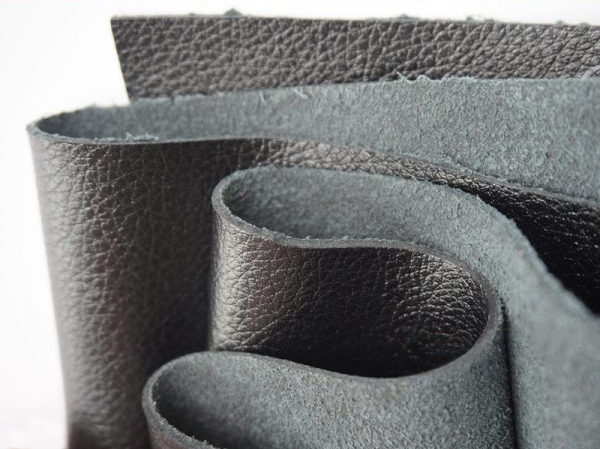
Cut edges and reverse side look of microfiber leather
Microfiber leather is very durable and has antibacterial and anti-odor chemical properties. It is lightweight, more breathable than the former PVC synthetic leather and water repellent. Compared to leather, it is also a more environmentally friendly product that is easy to clean and requires little maintenance.
Microfiber leather is the abbreviation for microfiber polyurethane synthetic leather. It is third generation synthetic leather after PVC- and PU synthetic leather.
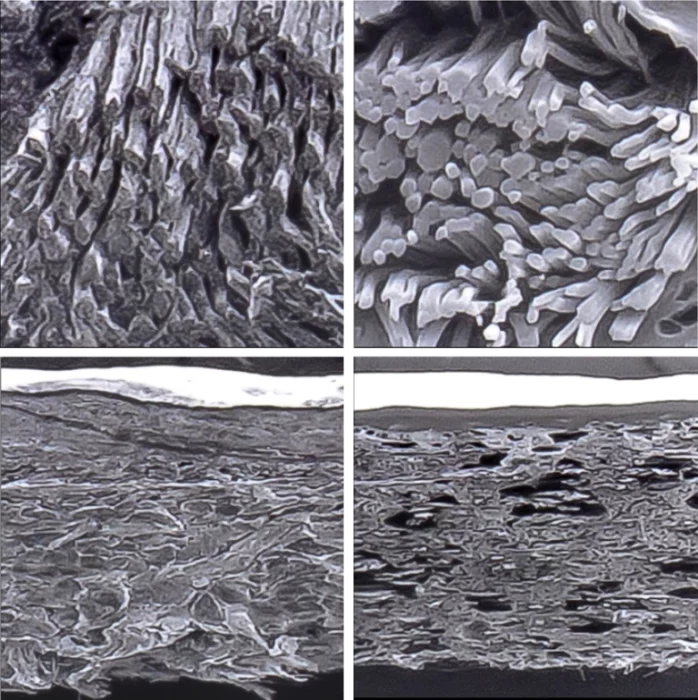
Top: Collagen fibers in genuine leather (left) and in synthetic replica (right). Bottom: Cross-section through a layer of genuine leather (left) and through the synthetic analog (right).
Microfiber leather consists of two parts, nylon microfiber and polyurethane, which are firmly bonded together.
In the structure of the ground layer, the ultrafine fibers are interconnected in three dimensions to act as a skeleton and support. They form a structure similar to dermal collagen fibers.
Polyurethane is distributed around the fibers, turning the entire synthetic leather base fabric into a functional whole. The many round, needle-shaped foam structures form a three-dimensional network.
The hair groove structure between them is offset and connected to form a fine permeable structure, so that the leather body has a certain breathability and moisture permeability.
The impressive history of synthetic leather
Synthetic leather already has a considerable history of almost 200 years.
As early as 1830, canvases were coated with linseed oil mixtures into which a structure was embossed.
Around 1900, these materials were followed by new processes in which carrier fabric was coated with a covering compound based on cellulose nitrate and also embossed.
Between 1900 and 1945, the so-called “Presstoff” produced in Germany and used throughout Europe was also popular; a specially treated and coated paper pulp.
Although this sounds quite bizarre, this material was actually very popular during the Second World War. It was used for horse harnesses, belts, holsters and much more.
Many other products were developed in the first half of the last century, such as “Naugahyde” or DuPont’s “Fabrikoid,” a cotton cloth coated with nitrocellulose. This was already used extensively in the 1920s for car seat covers as well as in the tops of convertibles.
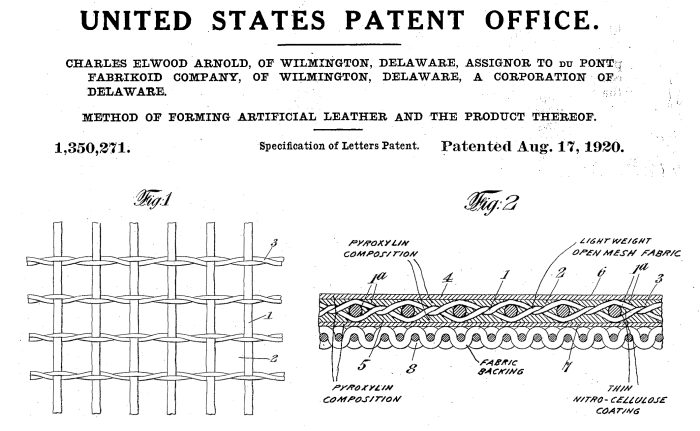
Patent synthetic leather “Fabrikoid” by DuPont 1920
In the middle of the 20th century, materials with a PVC (polyvinyl chloride) top layer became increasingly popular, before these were replaced by PU (polyurethane) coated materials and microfiber leather, especially in the higher-priced segment.
Microfiber leather properties
Depending on the manufacturing process and the quality of synthetic leather, it is almost indestructible. It neither changes its shape under strong mechanical impact, nor can it be pierced with normal force – except, of course, with the help of pointed objects. Genuine leather, on the other hand, loses its shape comparatively quickly, gives way under tension and dents when worn on one side.
Synthetic leather is easier to maintain than real leather and is less sensitive to stains. The synthetic leather can simply be wiped with a damp cloth or cleaned with a little soap and a sponge (but see also the last section “Care”).
Sustainability
When comparing the life cycle assessment of genuine leather with synthetic leather made from PU compounds, the imitation performs significantly better. By dispensing with animal products, the production of synthetic leather causes only about half the CO2 emissions. In addition, water consumption, use of toxic chemicals and production waste are significantly lower than for animal leather.
PU is also the clear winner in comparison to PVC-coated fabrics, which contain toxic plasticizers. So for fans of leather a real alternative – completely without animal suffering. Since the imitation is also free of other animal materials, such as wool, felt, silk or animal glues and dyes, these products are also suitable for vegans.
Polyurethane is a plastic – and therefore still not ideal in terms of sustainability. Compared to genuine leather, however, it is significantly more environmentally and climate friendly. Consumers also set an example against working conditions in the production countries and don’t have to worry about chromate residues on the skin.
Maintenance and care
Synthetic leather, although less than leather, is sensitive when it comes to sun exposure, so please protect from continuous direct sun.
As with genuine leather, sweat, skin grease, creams and some oils and lubricants attack the synthetic leather in addition to the sun. If these residues are not removed, the synthetic leather becomes brittle. It should therefore always be wiped with a damp cloth after use and briefly rubbed dry to prevent signs of wear.
For further care, it must be noted that synthetic leather should not be treated like conventional leather. Care substances such as leather grease would not be absorbed, but remain on the surface as an unsightly smear film.
Therefore, there are special care products, which you can additionally use from time to time to keep your synthetic leather as long as possible beautiful. These agents usually consist of sets with a cleaner and a sealer or impregnator.
The cleaner helps to dissolve dirt and thus clean the surface. A sealer is applied to the synthetic leather and prevents dirt and abrasion from settling on it.
There are countless products for this in the regional retailers, which is why we refrain here from selective mentions or advertising. We only refer as a suggestion and example to the products of this supplier, which also has products for the repair of minor damage to synthetic leather in the range (these products are available in most countries of the world):
https://www.colourlockaustralia.com.au/tip/furniture/imitation-leather.html


